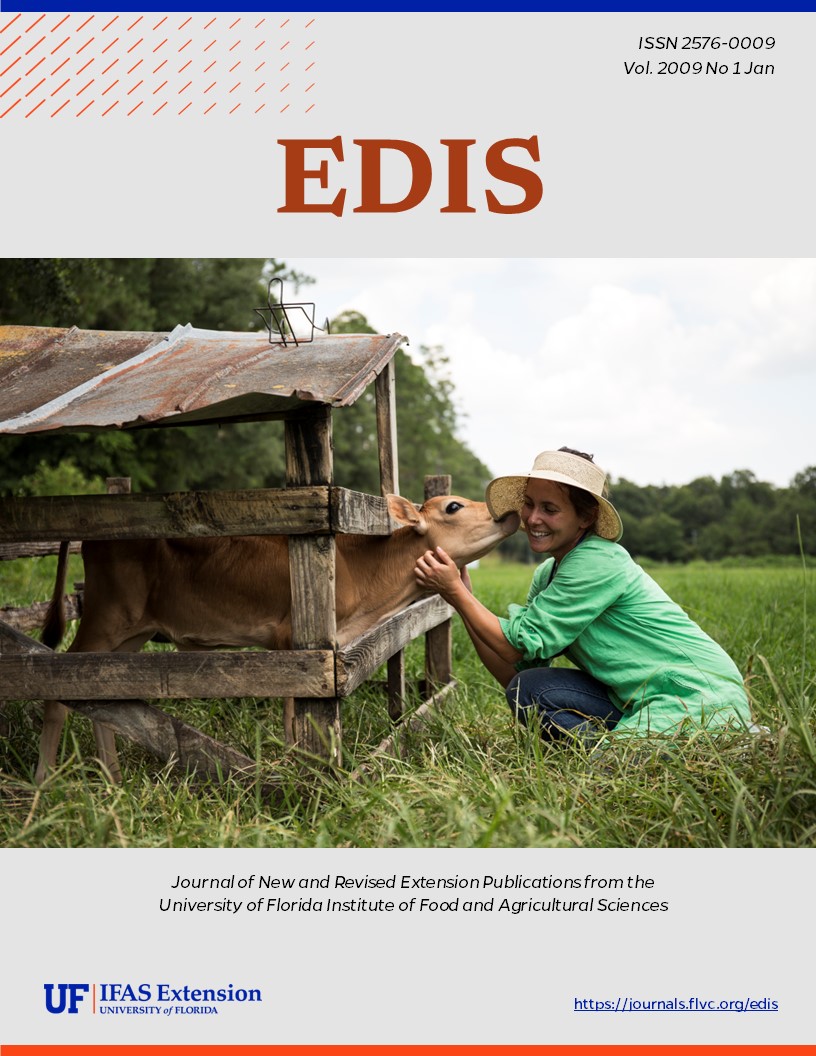Abstract
FA157, a 6-page fact sheet by Roy P. E. Yanong, uses a question-and-answer format to discuss how to use the hydrogen-peroxide based product 35% PEROX-AID ® as aquaculture treatment. Includes references. Published by the UF Program in Fisheries and Aquatic Sciences in the School of Forest Resources and Conservation, December 2008.
FA157/FA157: Use of Hydrogen Peroxide in Finfish Aquaculture (ufl.edu)
References
Avendaño-Herrera, R., B Magariños, R. Irgang, and A. E. Toranzo. 2006. Use of hydrogen peroxide against the fish pathogen Tenacibaculum maritimum and its effect on infected turbot (Scophthalmus maximus). Aquaculture 257:104-110. https://doi.org/10.1016/j.aquaculture.2006.02.043
Crosbie, P. B. B., and B. L. Munday. 1999. Environmental factors and chemical agents affecting the growth of the pathogenic marine ciliate Uronema nigricans. Diseases of Aquatic Organisms 36:213-219. https://doi.org/10.3354/dao036213
Mansell, B., M. D. Powell, I. Ernst, and B. F. Nowak. 2005. Effects of the gill monogenean Zeuxapta seriolae (Meserve, 1938) and treatment with hydrogen peroxide on pathophysiology of kingfish, Seriola lalandi Valenciennes, 1833. Journal of Fish Diseases 28:253-262. https://doi.org/10.1111/j.1365-2761.2005.00625.x
Montgomery-Brock, D., V. T. Sato, J. A. Brock, and C. S. Tamaru. 2001. The application of hydrogen peroxide as a treatment for the ectoparasite Amyloodinium ocellatum on the Pacific threadfin Polydactylus sexfilis. Journal of the World Aquaculture Society 32:250-254. https://doi.org/10.1111/j.1749-7345.2001.tb01103.x
Noga, E. J. 1996. Fish disease: diagnosis and treatment. Mosby Yearbook, St. Louis, Missouri.
Rach, J. J., T. M. Schreier, G. E. Howe, and S. D. Redman. 1997. Effect of species, life stage, and water temperature on the toxicity of hydrogen peroxide to fish. The Progressive Fish Culturist 59:41-46. https://doi.org/10.1577/1548-8640(1997)059<0041:EOSLSA>2.3.CO;2
Rach, J. J., M. P. Gaikowski, and R. T. Ramsay. 2000. Efficacy of hydrogen peroxide to control parasitic infestations on hatchery-reared fish. Journal of Aquatic Animal Health 12:267-273. https://doi.org/10.1577/1548-8667(2000)012<0267:EOHPTC>2.0.CO;2
Russo, R., E. W. Curtis, and R. P. E. Yanong. 2007. Preliminary investigations of hydrogen peroxide treatment of selected ornamental fishes and efficacy against external bacteria and parasites in green swordtails. Journal of Aquatic Animal Health 19:121-127. https://doi.org/10.1577/H05-024.1
Speare, D. J., V. Carvajal, and B. S. Horney. 1999. Growth suppression and bronchitis in trout exposed to hydrogen peroxide. Journal of Comparative Pathology 120(4):391-402. https://doi.org/10.1053/jcpa.1998.0285
Taylor, N. I., and L. G. Ross. 1988. The use of hydrogen peroxide as a source of oxygen for the transportation of live fish. Aquaculture 70:183-192. https://doi.org/10.1016/0044-8486(88)90016-6
U.S. Food and Drug Administration. 2002. Title 21 Code of Federal Regulations Part 530 (21 CFR 530). Available: http://www.fda.gov/cvm/Images/530.pdf (November 2008).
Western Chemical, Inc. website. Hydrogen Peroxide label, MSDS, and additional information available at: http://www.wchemical.com/35-PEROX-AID hydrogen-peroxide-P45.aspx (November 2008).

